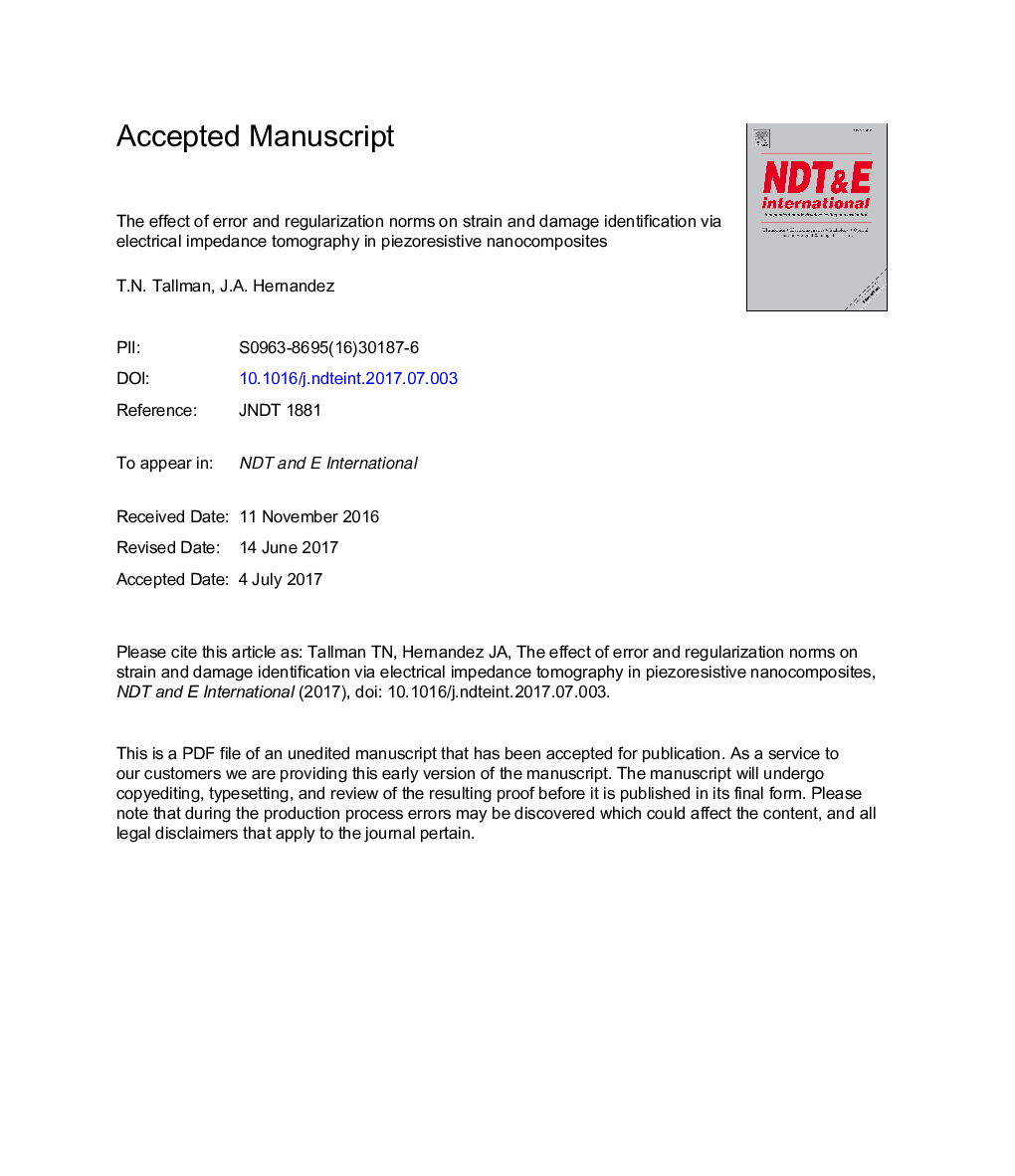| Article ID | Journal | Published Year | Pages | File Type |
|---|---|---|---|---|
| 4925160 | NDT & E International | 2017 | 25 Pages |
Abstract
Electrical impedance tomography (EIT) has recently emerged as a promising tool for the structural health monitoring (SHM) and non-destructive evaluation (NDE) of piezoresistive nanofiller-modified composites. With few exceptions in SHM and NDE, the vast majority of studies have formulated the EIT problem such that it endeavors to minimize a voltage error vector in the least-squares sense while simultaneously using an additional least-squares term for regularization. Unfortunately, the use of least-squares minimization and regularization has important limitations especially in the context of SHM and NDE. For example, the least-squares error minimization is extremely sensitive to outlier data. Such outlier data is a very real possibility in SHM applications due to damaged electrodes. Additionally, utilizing a least-squares term for regularization renders EIT incapable of resolving discontinuous conductivity changes such as would be induced by fracture events. More sophisticated minimization and regularization techniques that obviate these limitations are well known to medical and mathematical practitioners of EIT; however, these methods have not been explored in SHM and NDE applications. This is an important oversight because the needs of SHM and NDE differ considerably from the needs of medical imaging. Therefore, we herein explore the use of different minimization and regularization norms on EIT for experimental strain identification, detection of artificially induced through-hole damage, and detection of impact damage.
Related Topics
Physical Sciences and Engineering
Engineering
Civil and Structural Engineering
Authors
T.N. Tallman, J.A. Hernandez,
